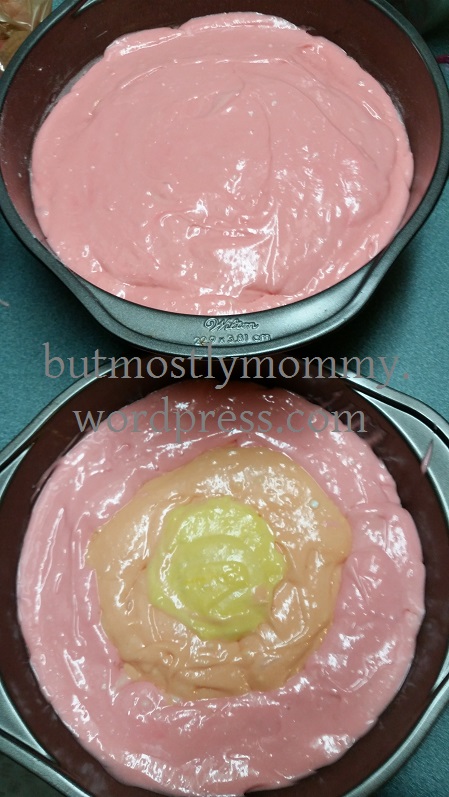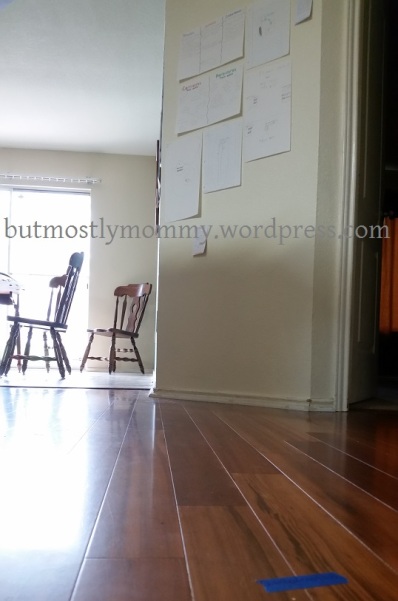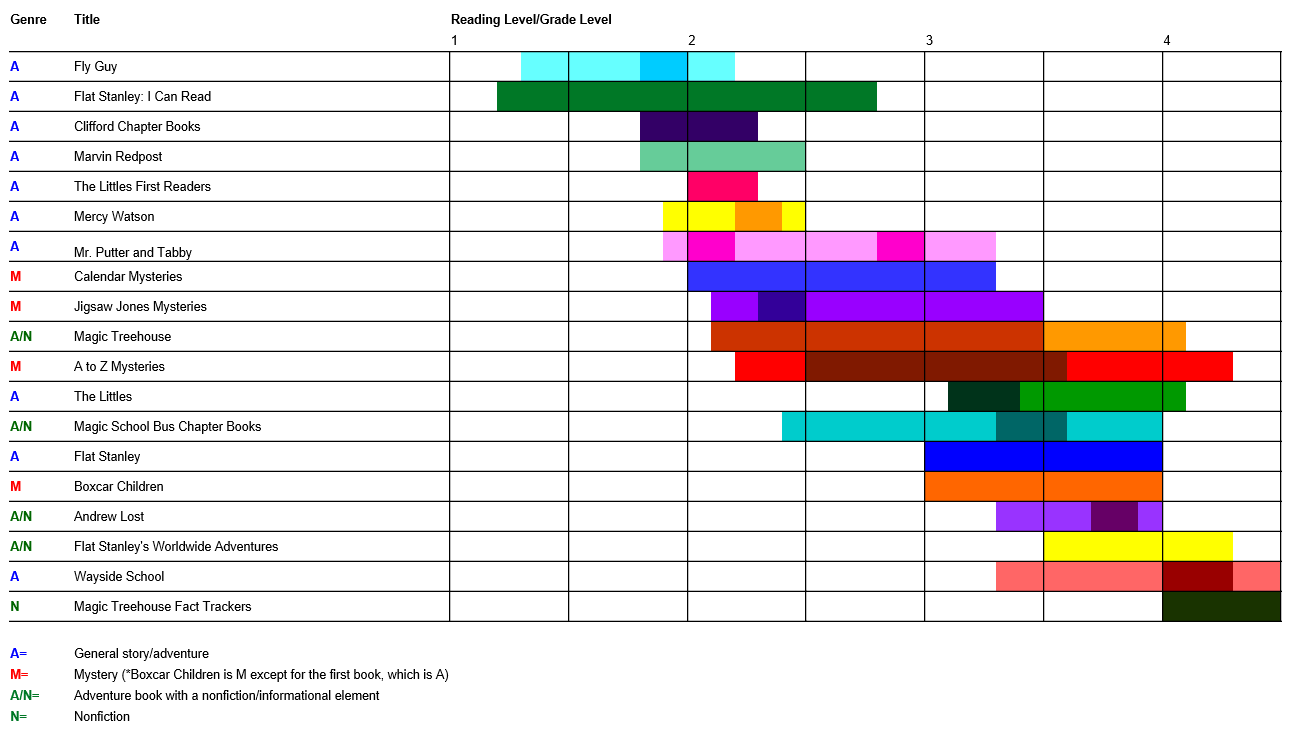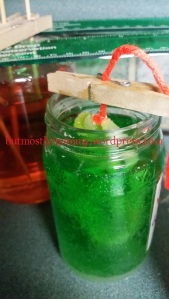So you’re thinking about homeschooling your kids, eh? I do that (much as I hate to admit it). My kids are still young, but I feel like I’ve got just enough experience to give you some warnings. If you want the awful truth about homeschooling, you’ve found the right blog.
Homeschooling is hard. Your kids are with you pretty much 24/7. Any errands you need to do, any doctors’ appointments you’ve got, any cleaning you need to accomplish, anything at all you want to do–they’re there.
Now, you may be thinking, “I’m a stay-at-home mom anyhow–how is this any different than having a toddler underfoot constantly?” There are a few differences. For one, your toddler likely takes naps. Ah, those blissful hour-or-more periods of afternoon freedom! During naptime, I was able to do a bit of cleaning each day and STILL have some time for puttering online. I had a bit of much-needed quiet. I could use the bathroom without someone shouting at me through the door–or simply barging in.
As your children get older, they stop needing naps. You can try to enforce a daily quiet time, as some do; I waved the white flag on that one because my oldest kept eagerly calling out during his quiet time, wanting to show me his Duplo creations or explain the nest he was building. (And could YOU look into those sparkling eyes and tell him that Mommy just wants to be alone and QUIT calling me to share your masterpieces? I thought not.)
So. You have children around the house who no longer nap. They don’t DO quiet. They are getting older, and are thus acquiring the dreaded Toys of Many Pieces. You thought it was awful to have rattles and toys-with-many-balls littering your living room? Now try millions of tiny, razor-sharp Legos scattered across the floor studded with those giant plastic nails brought to you by the makers of Sorry!, a sprinkling of stray perler beads, and a few quadzillion Calico Critter-sized muffins. These pieces never really get put away because, frankly, your children never really get put away, and where they are, there are their toys. You try to limit said toys to one room of the house, hoping to contain the insanity, but somehow they begin to colonize and you find yourself stepping on teeny toy pieces in the kitchen, the hallway, the bathroom–your feet are doomed.

See the clutter all over the table? That’s what my whole house looks like–our stuff seems to leak out over every surface no matter how often I purge and de-clutter. And see the water all over the floor? This is my kids cleaning. Even cleaning isn’t clean with your kids around all the time.
Moving on. You have children who no longer nap, don’t do quiet, and have fallen in love only with foot-assailing, million-pieced toys. Everyone assumes said children must be gone at school for the day, since any sane person would want a break from them. Your doctor offers daytime appointments, your church offers daytime women’s programming, your new acquaintances suggest daytime coffee-dates. Everyone expects you to haul along your nursing infant (or not, if you’ve got faulty equipment like mine) or chubby-cheeked toddler. No one quite knows what to do with your gangly six-year-old–or, heaven help you, your even ganglier eleven-year-old. And let’s not even get into the money you could be earning, rather than spending, with a lovely part-time job. (Sure, you could get an evening-and-weekend gig, but then when would you do your lesson planning, much less enjoy a moment of much-needed peace during the time your spouse is around to wrangle the crew?)
When you send your children to school for the day, they are not with you. This seems obvious, but think of the implications: it’s hard to get annoyed with someone who’s not with you. You can’t possibly need a break from someone who is not there. Do you see where I’m going with this? It’s mutual, you know. You may get tired of having your children constantly NEEDing you–but they get rather tired of always being under your eye, as well. And let’s not even get started on how they interact with each other. Those who go to school might take out their pent-up angst on their siblings at the end of the day, but those who aren’t in school have no time limit on the release of said angst, nor do they ever have a break from their siblings’ annoying habits.
When you send your children to school for the day, they are not at home. Again, this seems obvious, but let’s look at the implications: you can’t possibly make a mess of a place where you are not. You can’t possibly get tired of a place you’re not at. When your children go to school, they leave the house and go somewhere else. They spend a majority of their waking hours there, making a mess of someone else’s space and hanging out in spacious rooms with schooly decor. If you homeschool your children, they spend an awful lot of time at home, looking at the same walls and making messes with the same toys. (My sister’s house sure got cleaner after she sent her kids to school!) Sometimes the whole lot of you feel rather cabin-fever-y.
And that doesn’t even get into the issue of being the sole educational authority in your children’s lives. If you tell them that New Mexico is a separate country, they may have no one to set them straight for a decade or more. Unless you are in a state with strict homeschooling regulations, YOU are the one who chooses what your child will learn, when they will do the learning, and through what means. Have you looked at the myriad curricula available? Pick one subject, and you could likely spend months of evenings researching curricula without even getting to all of them. Even if your kids did stop napping before they reached school age, you didn’t have this time-consuming monstrosity of plotting, planning, researching, and bargain-shopping hanging over your evening free time. And then consider the effort of planning out said curricula and making sure it gets learned. At school kids have the weight of peer pressure and non-family-adult authority to keep them plodding away at even the things they don’t love. At home, they find it far too easy to whine at the teacher, try various avoidance techniques for subjects they don’t enjoy, burst into tears when something isn’t instantly understood… Perhaps the latter is a good thing for them, reducing their stress by allowing emotional release; it certainly is NOT a pleasant stress-reducer for me.
Do you want your children to be exposed to art, music, and athletics? Welcome to additional teaching or additional expenses. Hoping your children don’t become hermits, but are exposed to a variety of different people and have the opportunity to form lasting friendships? Unless you happen to be in a kid-populated neighborhood, you’ll have a grand ol’ time hauling your kids to extracurricular activities, haunting the park hoping to find playmates, and trying one homeschool group after another–each more expensive than the last.
Do you have multiple children? If so, you have multiplied your problems. What if one of the curricula you have agonizingly chosen and spent precious money on is perfect for one child, but a horrible fit for the next? What do you do with your other children while one of them is having one-on-one instruction? How do you find opportunities for each of your children to develop their separate talents and interests and establish an individual identity and some friends of their own, all whilst hauling the whole lot of them along everywhere you go?
All these dilemmas–and more–await the lucky parent who chooses to homeschool their brood. And yet… And yet, though I did look up public school registration information and think of how simple it would be just to sign us up and send my kids off to school, I never seriously considered doing so. It’s not that I’m snobbish and look down on public school or wish to keep my children away from others, it’s just that I love the life I am able to forge for my kids as a homeschooling family, despite the difficulties and frustrations. More on that to come.


 My kids wanted to study volcanoes. I was totally uninspired by volcanoes, but I thought I’d run with it, perhaps expanding the study to include plate tectonics and the rock cycle so we’d have a bit more to talk about. While I was searching for inspiration, I ran across the idea of having a cake to show Earth’s layers. “Great!” thought I. “Sign me up and show me how!” (I’m a sucker for anything edible–particularly if it’s sweet!) Unfortunately, everyone doing this project seemed to have round bakeware–cake pop molds of varying sizes, round-bottomed oven-safe mixing bowls. Not I. And, since I am disinclined to shell out that kind of money for the props to make one cool snack, I thought I’d look for my own way.
My kids wanted to study volcanoes. I was totally uninspired by volcanoes, but I thought I’d run with it, perhaps expanding the study to include plate tectonics and the rock cycle so we’d have a bit more to talk about. While I was searching for inspiration, I ran across the idea of having a cake to show Earth’s layers. “Great!” thought I. “Sign me up and show me how!” (I’m a sucker for anything edible–particularly if it’s sweet!) Unfortunately, everyone doing this project seemed to have round bakeware–cake pop molds of varying sizes, round-bottomed oven-safe mixing bowls. Not I. And, since I am disinclined to shell out that kind of money for the props to make one cool snack, I thought I’d look for my own way.





 We began at the very beginning, which has always been a notoriously good place to start. In chemistry, the rational beginning place was the Periodic Table. From Ellen McHenry’s The Elements, we learned about the elements, how they were discovered, how they are arranged on the Table, and what different element types are like. Thrown in with this were some fun activities to help us learn the abbreviations for common elements, among other topics.
We began at the very beginning, which has always been a notoriously good place to start. In chemistry, the rational beginning place was the Periodic Table. From Ellen McHenry’s The Elements, we learned about the elements, how they were discovered, how they are arranged on the Table, and what different element types are like. Thrown in with this were some fun activities to help us learn the abbreviations for common elements, among other topics. With a little bit of basic chemical understanding under our belts, we were ready to delve into the world of cooking. For this portion of our endeavor, we used Edible Science: Experiments You Can Eat from National Geographic Kids, the American Chemical Society’s free
With a little bit of basic chemical understanding under our belts, we were ready to delve into the world of cooking. For this portion of our endeavor, we used Edible Science: Experiments You Can Eat from National Geographic Kids, the American Chemical Society’s free 




 Activity 1: Mixture or Solution?
Activity 1: Mixture or Solution?


